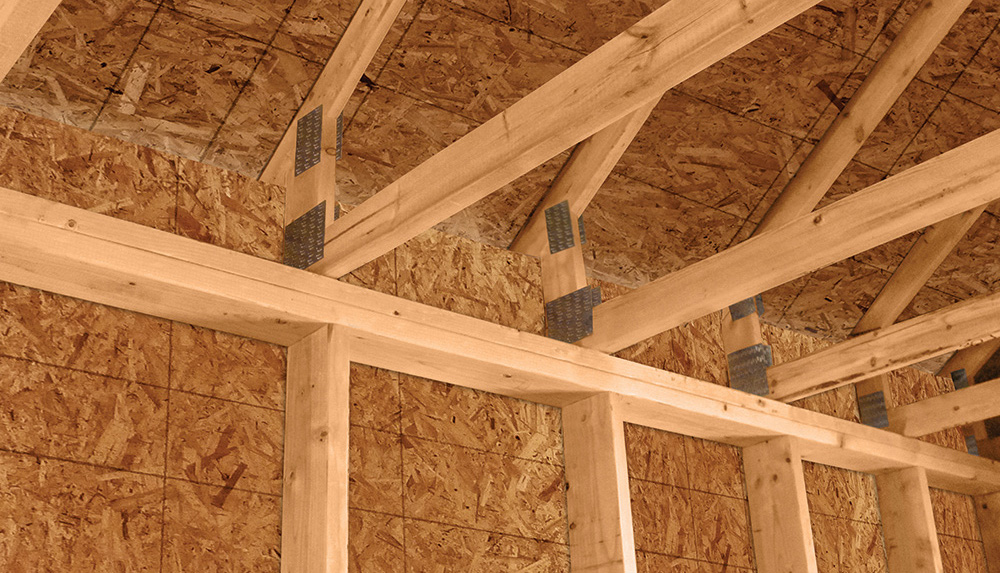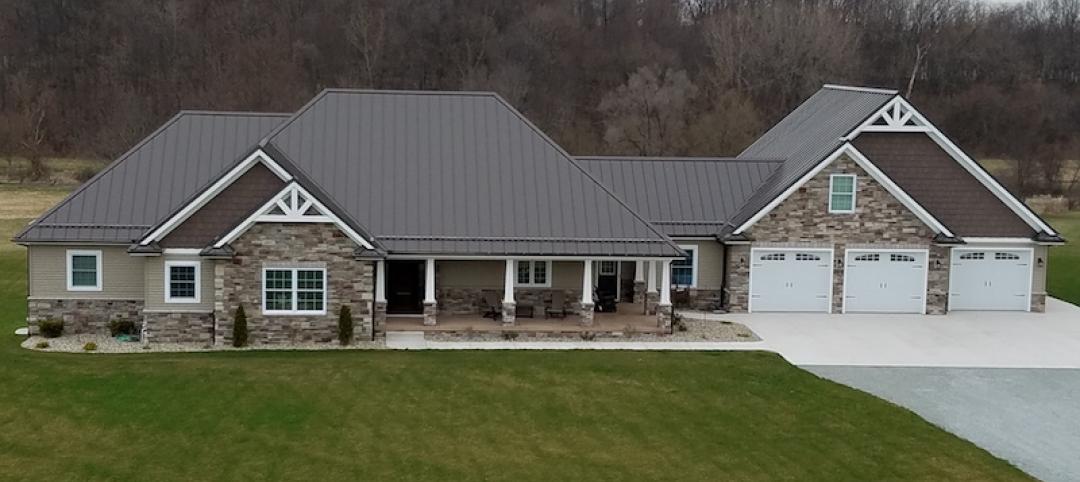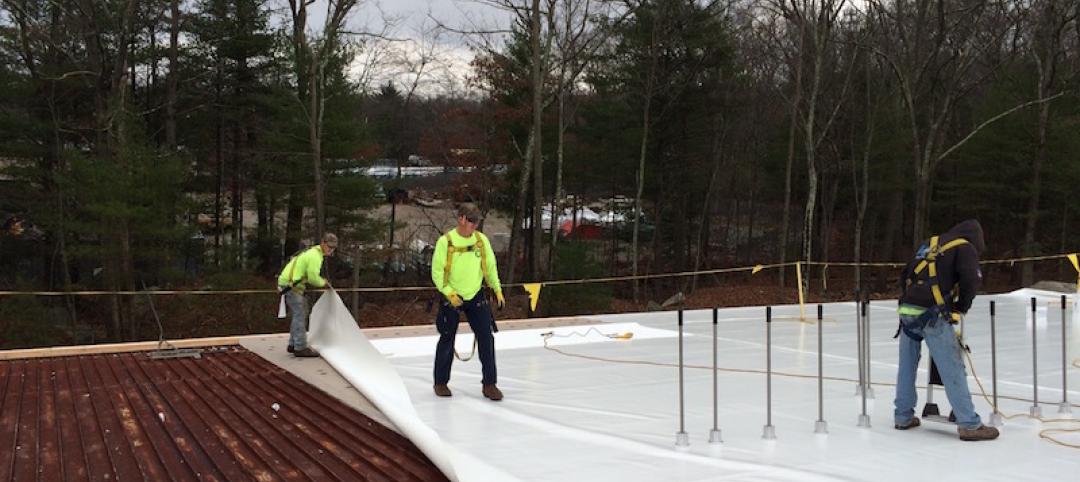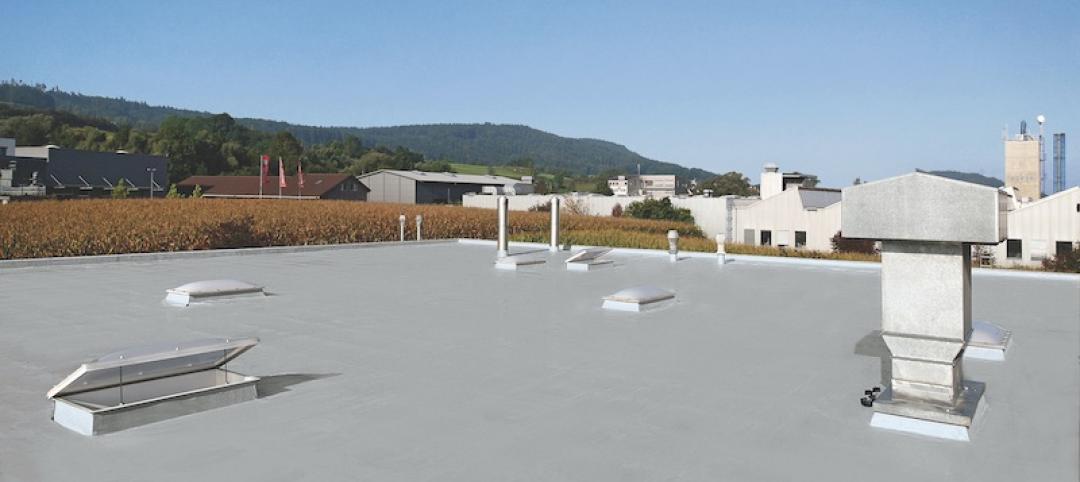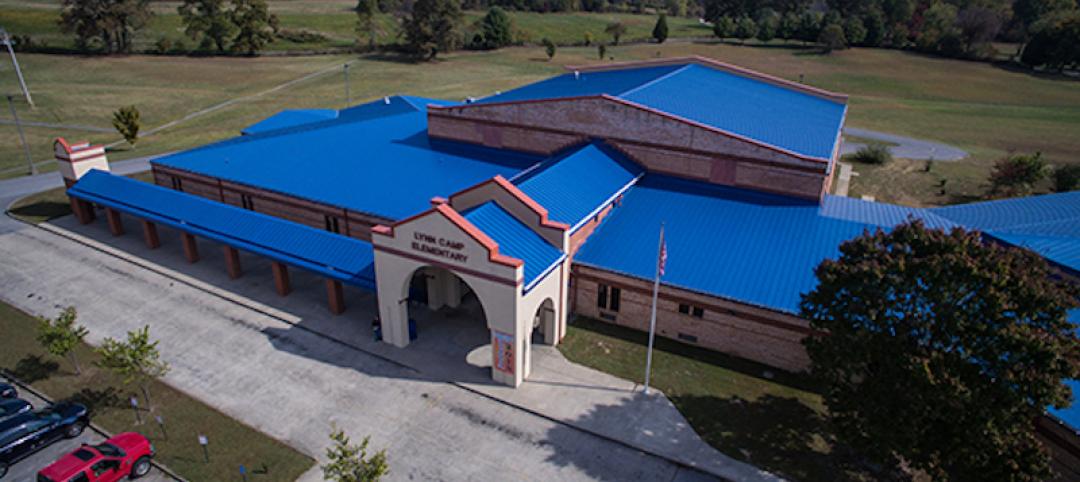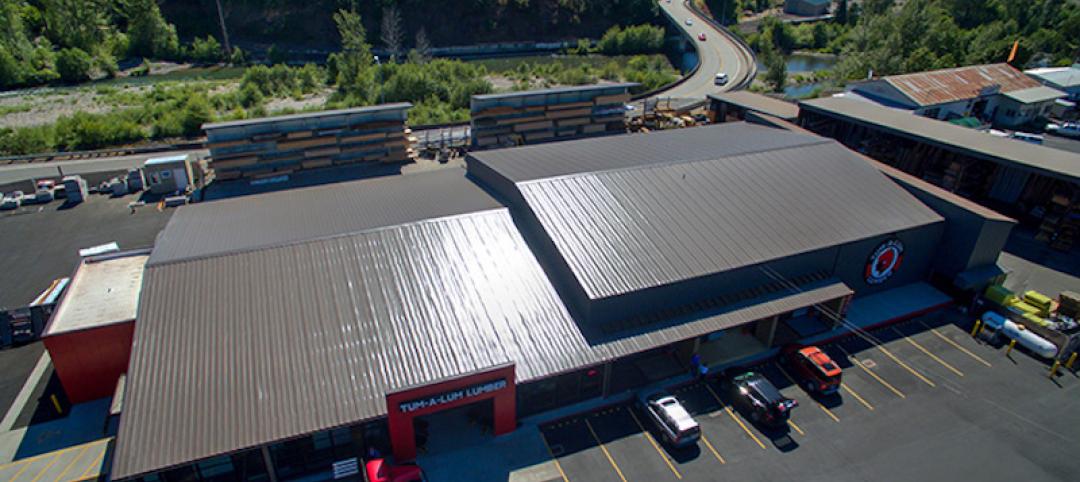A new guide describes how builders can increase the structural and energy performance of a home with a raised-heel truss construction system.
According to the publisher of the guide, APA – The Engineered Wood Association, building with raised-heel trusses results in savings for the builder and an energy-efficient, structurally superior residence for the homeowner. A raised-heel truss has a “heel” that extends up from the top of the wall and elevates the truss at the building’s edges. In other respects, it is identical to a conventional truss.
The guide says that raising the truss higher has two big advantages over typical truss construction: It simplifies attic ventilation, and it leaves ample room for insulation above exterior wall top plates. With the added space, the truss doesn’t compress attic insulation over the top plate and compromise its insulation value, a common weakness of conventional truss systems.
The energy code allows for use of less insulation for the entire ceiling system when a raised-heel truss system is used, allowing builders to reduce material costs and increase energy efficiency. Home Energy Rating (HERS) studies also indicate that with consistent ceiling insulation, APA says, the home maintains a more stable interior temperature that results in a more comfortable home and lower utility bills.
The system also features structural advantages, according to APA. Wall systems that combine raised-heel trusses with overlapping continuous plywood or oriented strand board (OSB) sheathing have better resistance to lateral forces produced by high winds or seismic activity than those fastened with conventional wall-to-truss connections.
Related Stories
Sponsored | Roofing | Jun 29, 2017
Metal roofs are soaring in popularity in the residential market
The Metal Roofing Alliance estimates that 750,000 metal roofs were installed on U.S. homes in 2015.
Sponsored | Roofing | May 24, 2017
Duro-Last Duro-Bond Roofing System installed on New England warehouse
Breault Roofing created a way to make the installation process more efficient by requesting mostly tabless sheets and fastening the membrane with induction welding to the purlins instead of a regular mechanically fastened system onto the pan.
Sponsored | Roofing | Apr 12, 2017
Milwaukee Public Schools adopt innovative roof drainage system from Atlas to extend life of school buildings
Located throughout the city of Milwaukee and neighboring towns, MPS houses thousands of students.
Roofing | Mar 29, 2017
Product roundup: 12 cutting-edge roofing solutions
Dynatsy Shingles from IKO, CR G cap sheets from Johns Manville, and GenFlex EPDM Adhesive from GenFlex Roofing Systems are three of the 12 products in BD+C's March Product Roundup.
Sponsored | Roofing | Mar 21, 2017
Duro-Last provides solution for Kentucky elementary school's leaky roof
The assembly used for this project was Duro-Guard EPS Flute Fill Combo as the base, and then Duro-Guard ISO HD and DensDeck® cover boards.
Roofing | Feb 8, 2017
Energy code requirements for commercial low-slope roof assemblies [AIA course]
This course highlights commonly adopted energy-code provisions for commercial low-slope roof assembles and examines the process of how such provisions are adopted.
Sponsored | Roofing | Nov 7, 2016
Pioneering Urban Loft Space in Atlanta
To abide by the historical and city guidelines, Larimer/Shannon Group selected a fully adhered UltraPly™ TPO Roofing System from Firestone Building Products with polyiso insulation, high-density cover boards and an UltraPly TPO Walkway Pad.
Shopping Centers | Nov 4, 2016
Expansion of Chadstone Shopping Centre features 7,000 square meter glass roof
2,700 unique glass panels make up the first roof of its kind in Australia.
Sponsored | Roofing | Oct 24, 2016
Metal roofing panels reinvigorate town staple
Designers for the project initially thought patching and repairs would be sufficient for the 35-year-old, 17,000 square foot roof, however upon further inspection it was determined that the building needed a new roof.


